In trying to find a vegan lemon basil pesto recipe, I came up totally short— so I decided to develop my own! The combination is a great way to use up lemon basil, though you can also make it with regular basil + a squeeze of lemon juice. It's also a fantastic way to add some antihistamine power to your lunch or dinner, without needing to whip out a bunch of different vegetables.
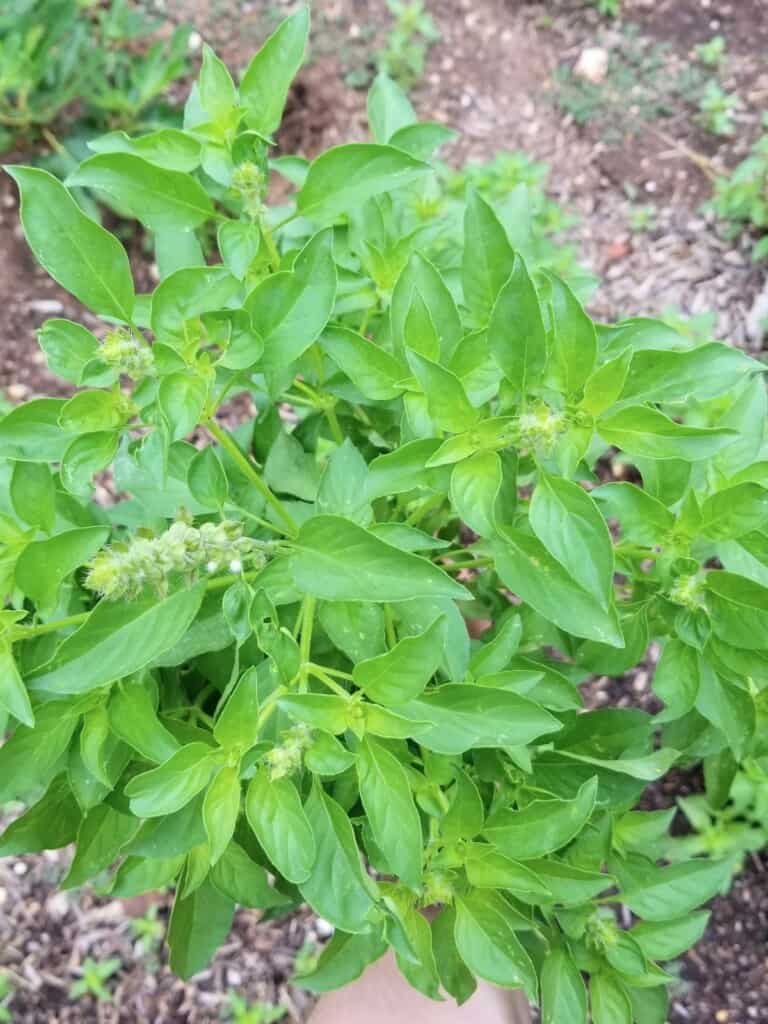
Jump To
About this recipe
Nutrient dense. Beyond the antihistamine properties of lemon basil, this pesto has raw garlic, olive oil, and pistachios, each of which contribute to the productions of DAO, an important chemical for naturally clearing histamine.
Use up extra lemon basil. If you're like me and enjoy growing tons of herbs each summer, this lemon basil pesto is a great way to use up extra lemon basil (though I won't tell anyone if you just used lemon juice + basil from the market, either!).
Easy to freeze. Just like my basic pecan pesto recipe, you can freeze this lemon basil pesto in patties in the freezer, then stack them in a container for long-term storage.
Ingredients

Lemon Basil: this less common type of basil is the base for this citrus-free lemon basil pesto. It's a good choice for low histamine sauces because it also packs an antihistamine punch without using any actual lemons.
Pistachios: raw pistachios are high in protein and a great source of copper, manganese, and vitamin B6. While you could use pistachio butter in place of pistachios, I highly recommend using fresh pistachios and toasting them yourself (though only if it's a brand you've tolerated before & the only ingredient is pistachios).
Raw Garlic: similar to the nuts, using raw garlic adds an umami element to the sauce that really complements meats and root vegetables.
How to make pesto with lemon basil: step-by-step instructions
Before Starting: Instead of soaking & drying your raw pistachio nuts to reduce antinutrients, I recommend toasting them for 2-3 minutes on low, until they're starting to smell a bit toasty and browned, then take them off the heat.
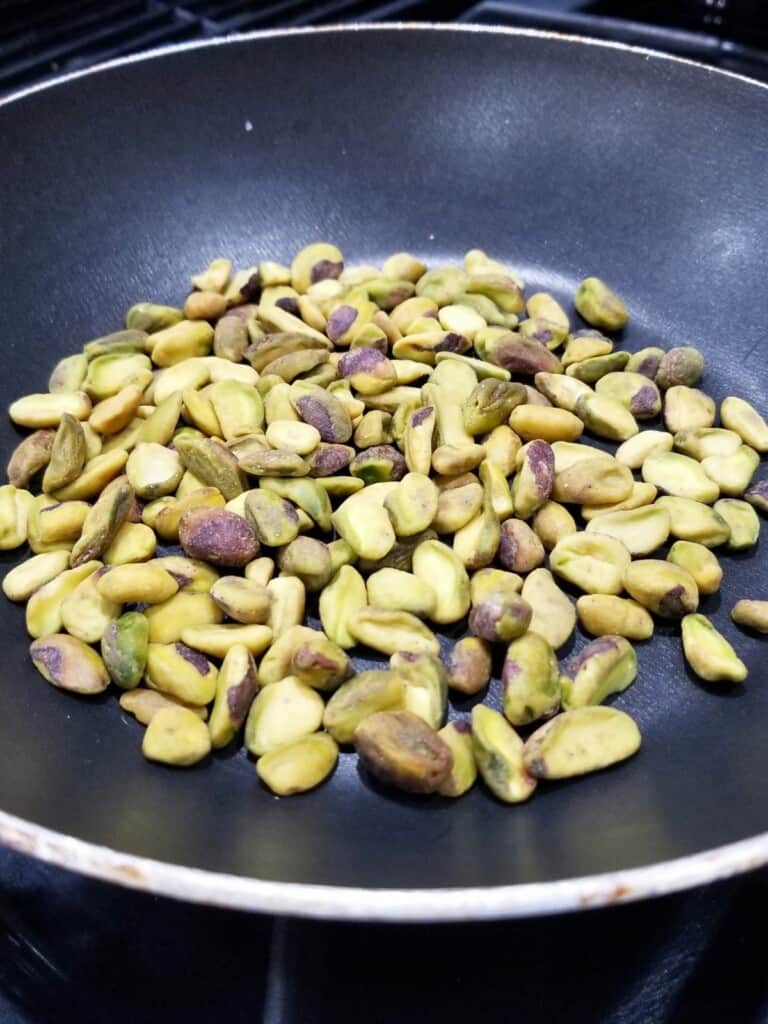
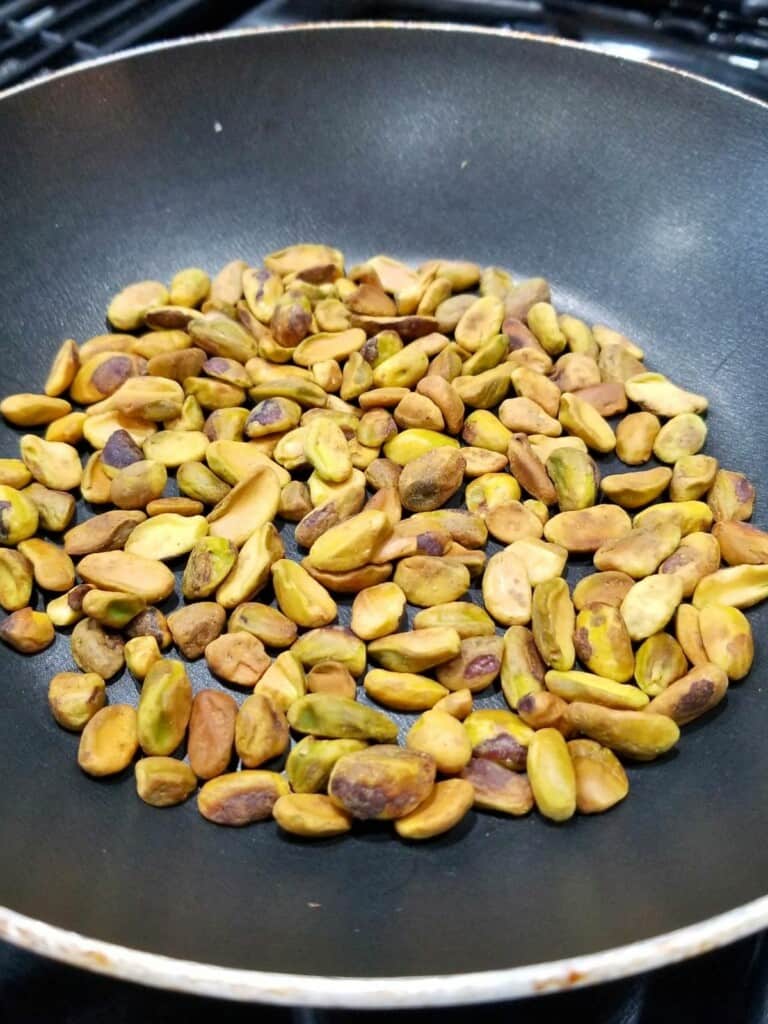
Step 1. Pluck off all your lemon basil leaves from the stems, avoiding getting any flowers or seeds into the mixture.
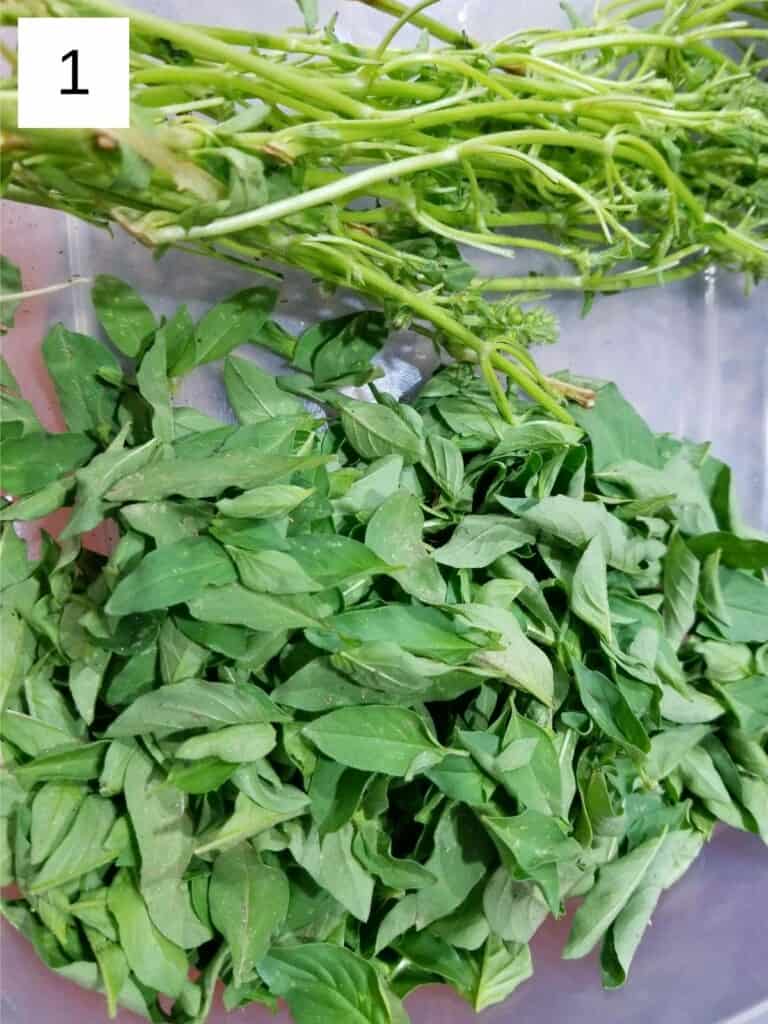
Pro-Tip: If you plan to use up extra lemon basil fresh from the garden, you should start removing the leaves immediately. Otherwise, lemon basil leaves wilt almost immediately after picking, but will perk right back up in just 2 days if you put them in water.
Step 2. Measure 2 cups of leaves, lightly packed, and then place all of them into a colander and wash them. Then add all of them to the bowl of your food processor with 1 Tablespoon of oil and blend for 10 seconds, until all the basil leaves have been lightly chopped and coated in oil.
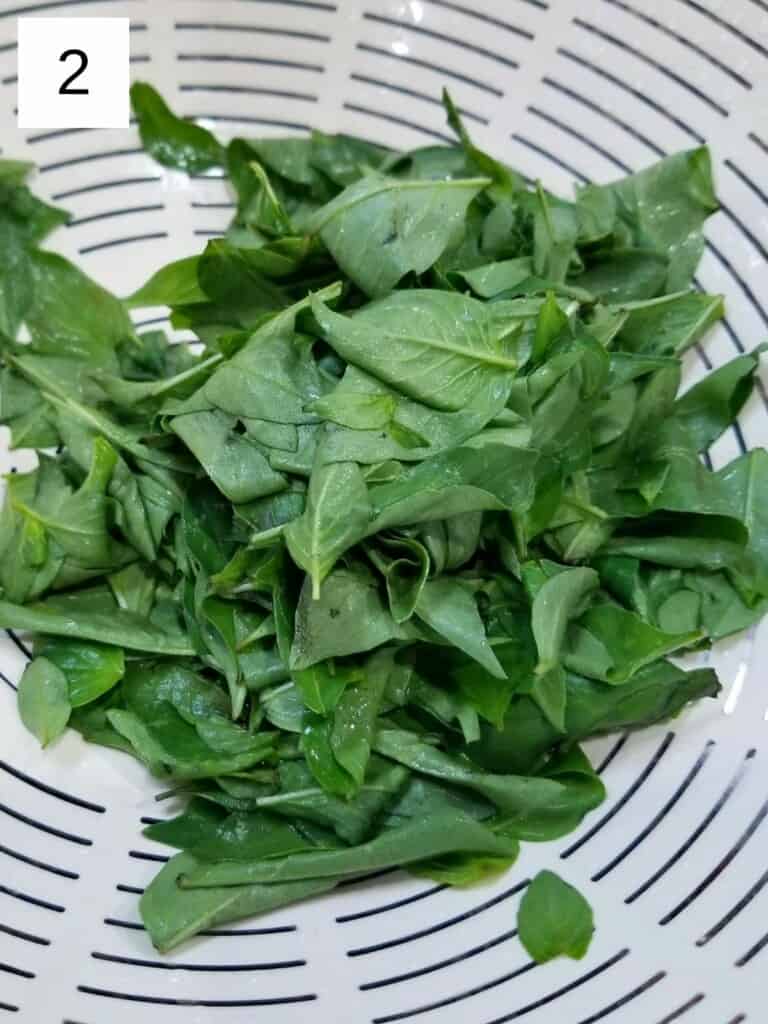
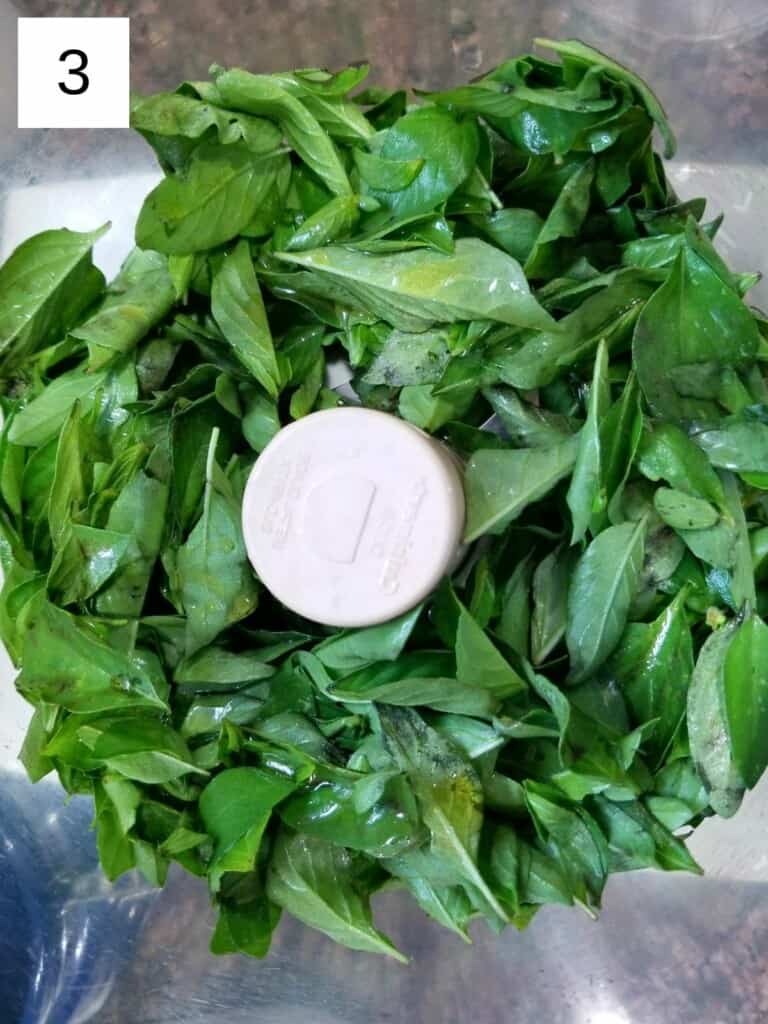
Step 3. Scrape down the sides of the food processor bowl, and then add the garlic clove, toasted pistachios, salt, and 1 Tablespoon of oil to the lemon basil. Put on the lid and pulse the ingredients for 10-20 seconds. If you have a really high-powered food processor or Vitamix, you'll probably only need 1 more Tablespoon of oil for the rest of the pesto, if that.
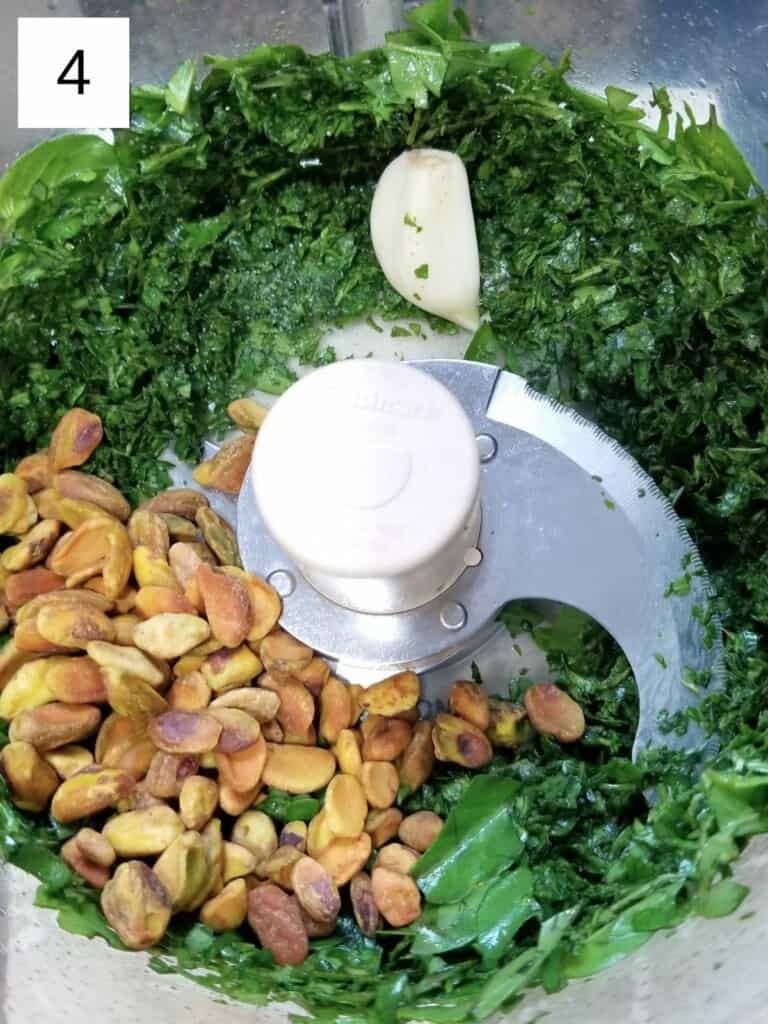
Step 4. Next, slowly add in all the rest of your oil, as needed, scraping down the sides at least twice and blend until very smooth, for about 30 seconds-2 minutes. Voila! Your lemon basil pesto is all done.
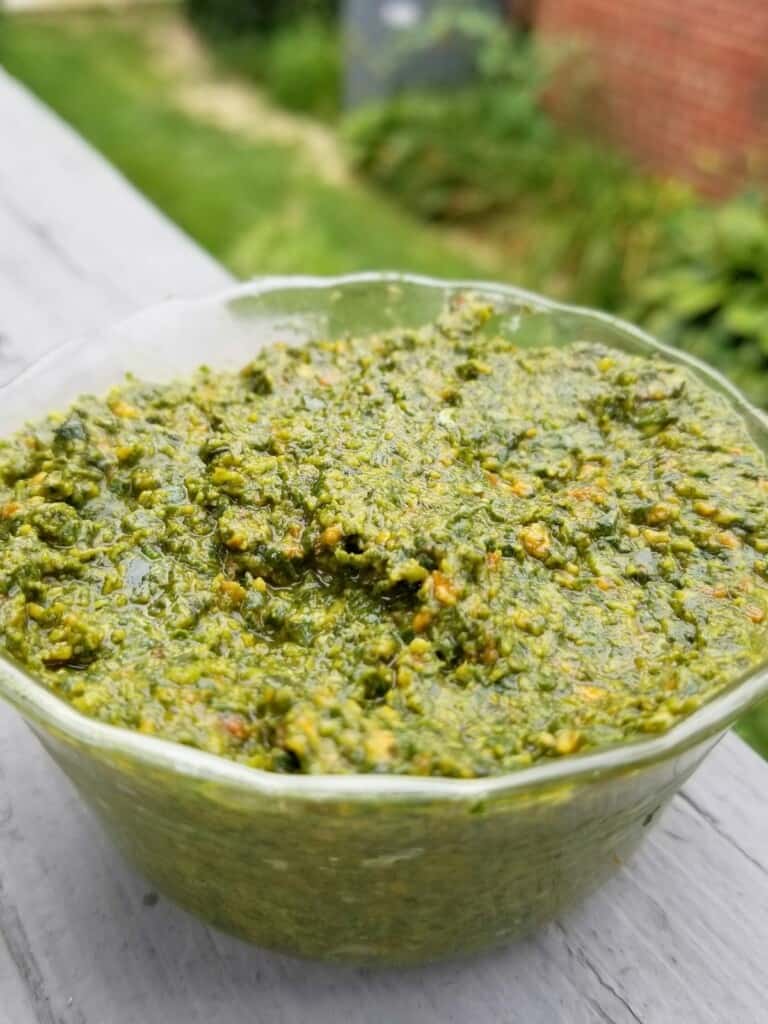
Recipe notes & tips
Lemon Basil. I have only tried this recipe with lemon basil, but you can use 2 Tablespoons of lemon juice + any varietal of 'normal' basil, like Italian, Opal, Purple, or Large-Leaf Basil in its place, if tolerated.
Using Pistachios. Although there's some disagreement as to whether nuts are "histamine liberators," most people tolerate them fine on a low histamine diet. Decent alternatives are macadamia nuts, sunflower seeds, and pecans.
Keeping Pesto Green. This pesto stays green much more easily than any other pesto I've ever made, similar to a commercial jarred pesto, which is usually made with basil that's been blanched to preserve its vibrant green.
What to do with extra lemon basil pesto
- stir it into hot mashed potatoes
- layer it between pieces of baked cod or salmon
- slather it onto grilled chicken
- mix it into eggs before making an omelette
- spread it on gluten-free crackers with a dollop of fresh cheese
FAQ about lemon basil pesto
Lemon basil pesto can last for up to one week in the fridge or up to two years if properly stored in the freezer.
Yes, you can make pesto with pistachios instead of pine nuts, but you will need to use slightly less pistachios as they have a very strong flavor.
At the moment there are no commercial pesto sauces made with pistachios instead of pine nuts.
Yes, you can freeze lemon basil pesto in patties or in ice cube trays, and then stack them inside air-tight freezer containers for up to 2 years.
Homemade Lemon Basil Pesto Recipe Card
As always, if you like the recipe, I really appreciate a review or comment!
📖 Recipe
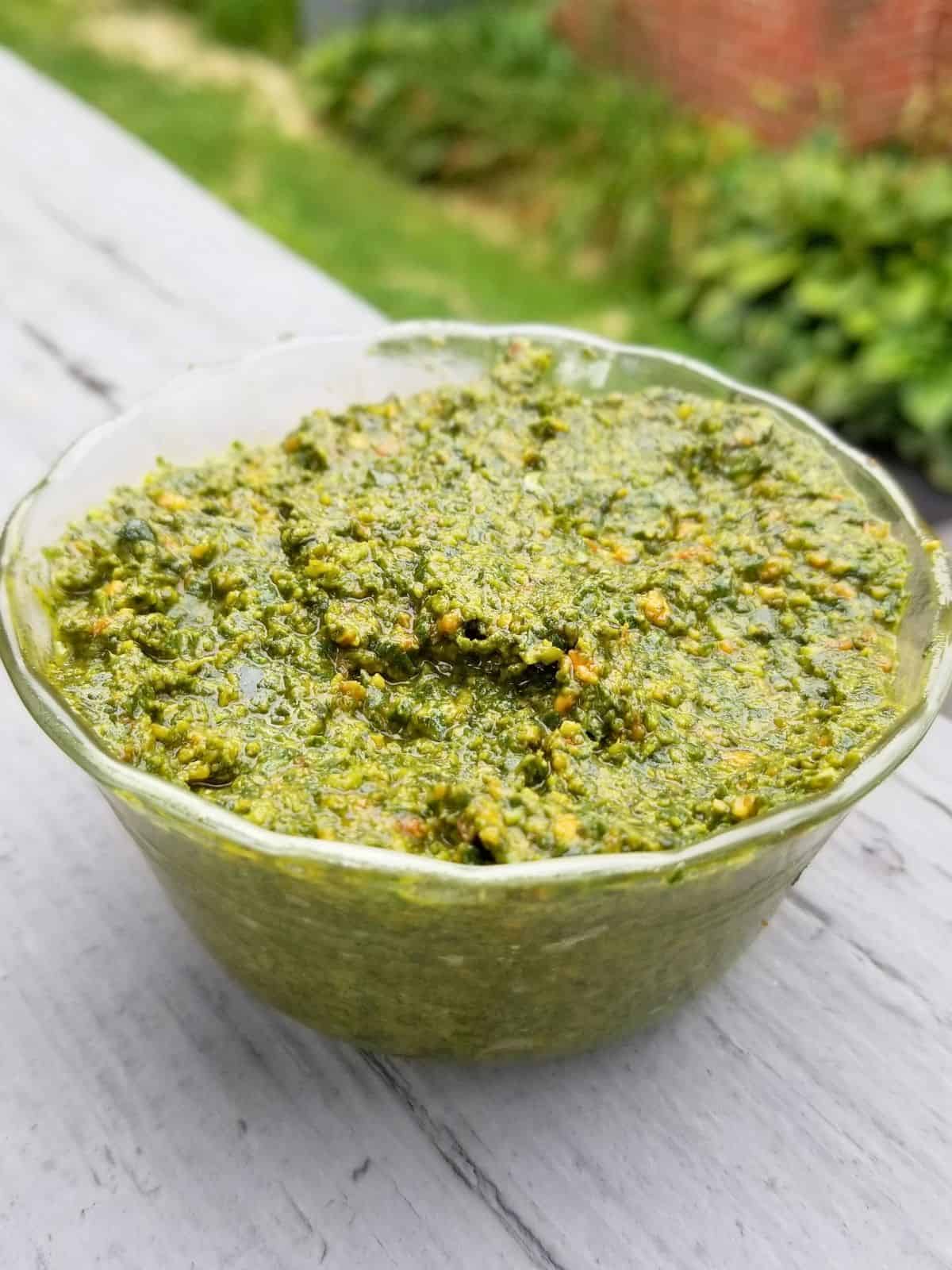
Veagn Pesto With Lemon Basil
Ingredients
- 2 Cups Lemon basil leaves loosely packed
- 3-4 Tablespoons olive oil or other tolerated oil
- ¼ cup toasted pistachios
- 1 clove garlic
- dash of salt
Instructions
- Toast raw pistachios for 2-3 minutes on low heat, until starting to smell a bit toasty and browned, then take them off the heat.
- Remove lemon basil leaves from stems, avoiding getting any flowers or seeds into the mixture.
- Measure 2 cups of leaves, lightly packed, and then wash them all carefully. Then add all of them to the bowl of your food processor with 1 Tablespoon of oil and blend for 10 seconds, until all the basil leaves have been lightly chopped and coated in oil.
- Scrape down the sides, and then add the garlic, pistachios, salt, and 1 Tablespoon of oil to the lemon basil. Put on the lid and pulse the ingredients for 10-20 seconds. Really high-powered food processors may only need 1 more Tablespoon of oil for the rest of the pesto.
- Next, slowly add in all the rest of your oil as needed, scraping down the sides at least twice and blend until very smooth (30 seconds to 2 minutes). Once smooth, your pesto is all ready to use!
Notes
Nutrition
Save this post for later!

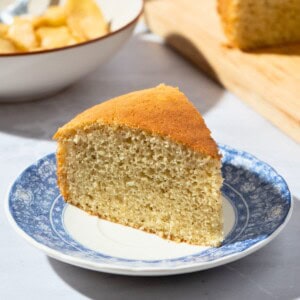











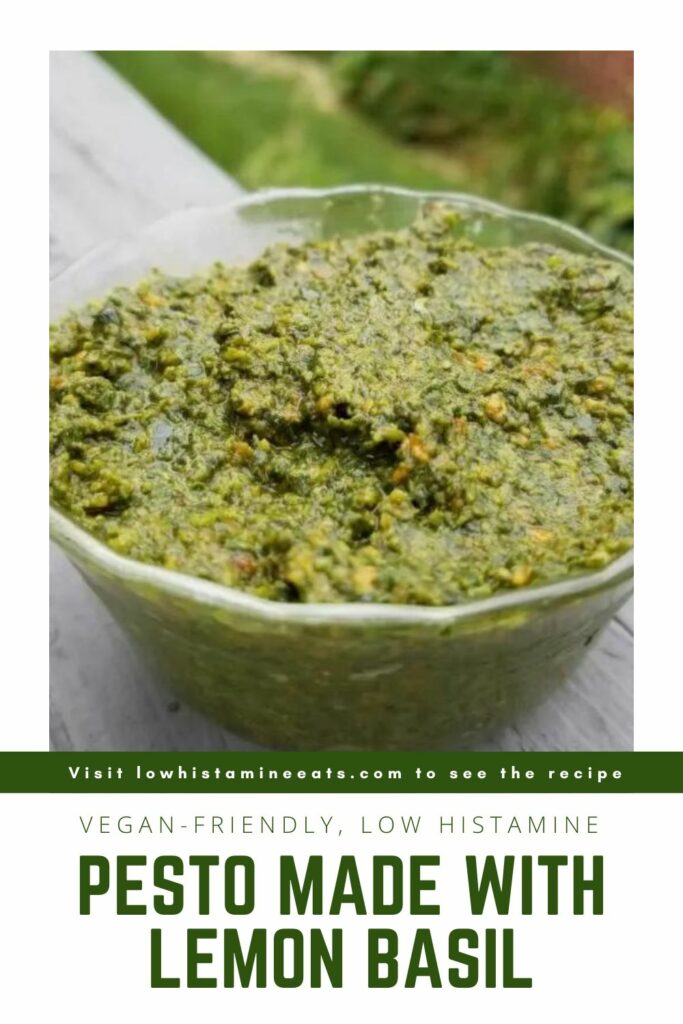
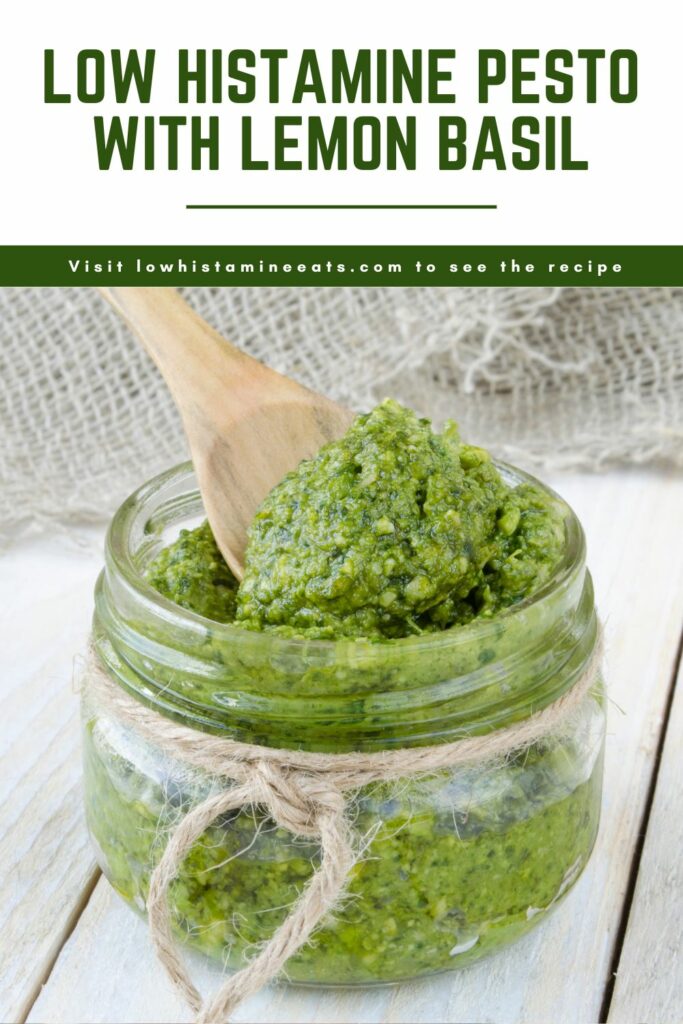
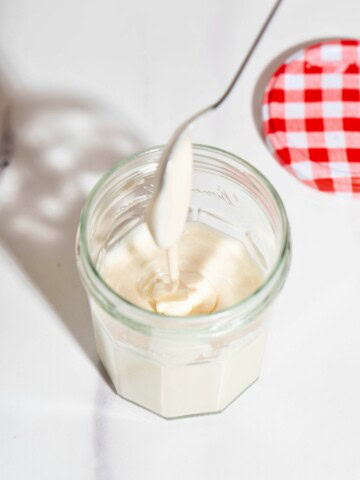

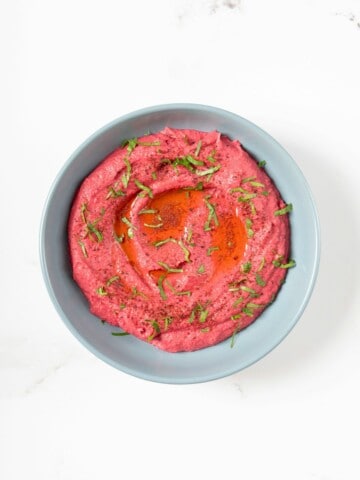
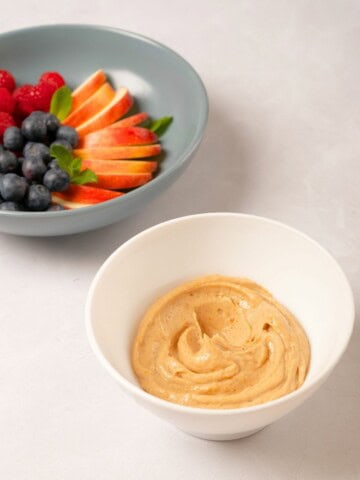
Comments
No Comments